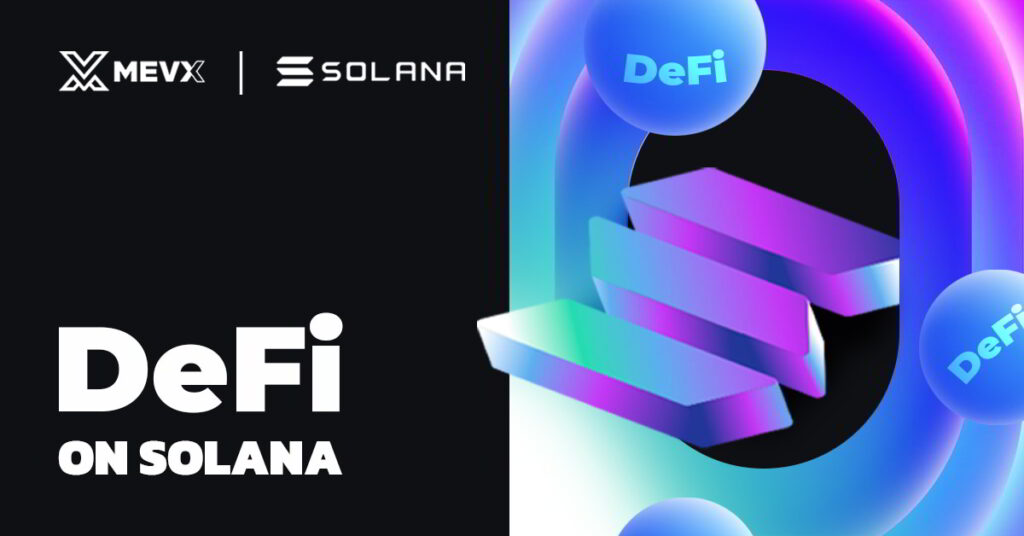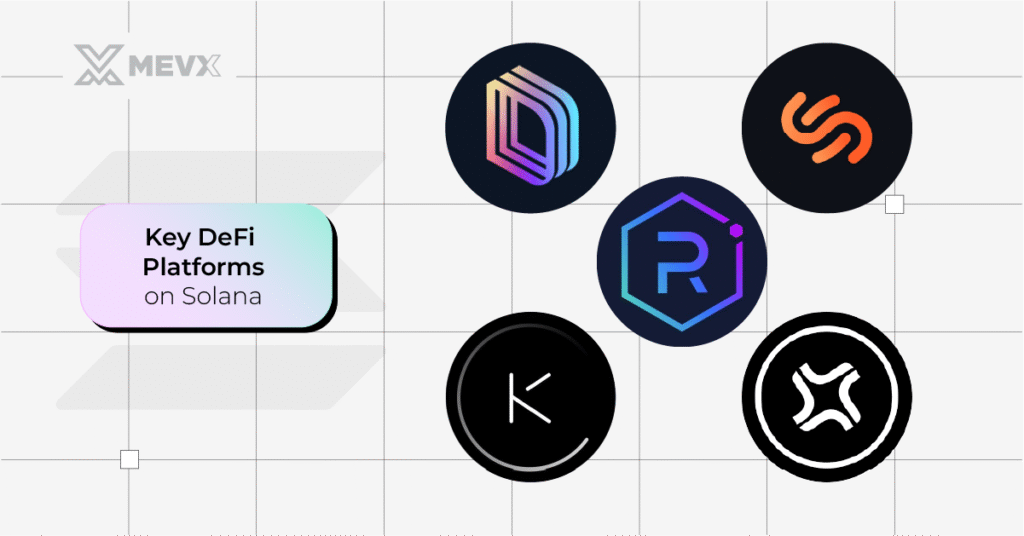Decentralized finance, or DeFi, is the manner by which money problems like trading, lending, and borrowing are solved without the intermediation of banks. Solana is inexpensive, quick, and easy to use, so it is a great choice for DeFi platforms. Here, we’re going to explore DeFi on Solana.

What Is DeFi on Solana?
Solana DeFi is the use of Solana network applications to hold your cryptocurrency independently. Unlike banks, there is no third party, and you are completely in charge of your wallet. Solana stands out because it is able to process thousands of transactions per second at very little cost, typically less than one cent. That level of speed at such an economical cost is perfect to be used for DeFi, where every transaction is significant.
Multiple platforms run by Solana exist for different purposes, including trading tokens, lending money, or earning rewards. Here are the key ones.
Key DeFi Platforms on Solana
These are five large Solana platforms people use every day. Each one has a different purpose, and they’re made to be both efficient and convenient to use.

Raydium: The Trading Hub
Raydium is a decentralised exchange, or DEX, where you trade one token for another, like SOL for USDC. It is fast and inexpensive because it is on Solana. You can invest your tokens into a pool and make money off people trading them, called providing liquidity. Raydium is such a great site because it is easy to use and works for pro or beginner traders.
Solend: Lend and Borrow
Solend is where you can lend your crypto to earn interest or borrow crypto by collateralizing some of yours. You’re essentially your own boss at your own little bank. You can collateralize SOL to earn some percentage after some time, or you can borrow USDC guaranteed by your SOL. The interest rates change based on who is lending or borrowing, but it’s an amazing way to make your crypto earn for you.
Kamino Finance: Earn More, Easily
Kamino Finance simplifies things so that you can earn rewards without needing to do much. You stake your tokens in the special pools called vaults, and the website does it on your behalf to earn you maximum returns. It does offer lending and borrowing, but it prioritizes simplicity. Your USDC or SOL can be made useful if you do not want to be bothered with the logistics.
Jito: Stake and Stay Flexible
Jito is purely dedicated to staking, or locking up your SOL, to assist in securing the Solana network for rewards. When you place your SOL on Jito, you get a token called JitoSOL in return. You can then bring your JitoSOL to other DeFi platforms, lending it on Solend, and you still earn your staking rewards. It is one way to make your money work, as opposed to it just lying dormant.
Drift: Trade with Leverage
Drift is for those who want to make bigger bets for bigger rewards. It is a perpetual futures exchange where you can bet on where the token is going. You can lever, borrow influence, to maximize your transactions, like using $10 to make a $100 gamble. Drift even has prediction markets where you can forecast outcomes of actual things that happen. It is more advanced, but it is one of Solana’s heavy hitters.
How to Get Started with DeFi on Solana
Ready to try DeFi on Solana? It’s not hard, and you can start with just a few steps. Here’s what to do:
Step 1: Set Up a Solana Wallet
First, you need to Set up a Solana wallet to hold your SOL and interact with these platforms. Phantom is a popular choice, it’s a free app you can add to your browser or phone.
Download it from phantom.com, set it up, and write down your seed phrase (a secret list of words). Keep that phrase safe and private, it’s your key to your wallet.
Step 2: Get Some SOL
You’ll need SOL, Solana’s token, to pay for transactions and use these platforms. Buy SOL on an exchange like Coinbase or Kraken. Once you have it, send it to your wallet.
Step 3: Connect to a Platform
Pick a platform you want to try, like Raydium or Solend, and go to its website. Look for a “Connect Wallet” button, click it, and choose Phantom. Your wallet will pop up and ask you to approve the connection. Once connected, you’re ready to use the platform.
Step 4: Start Using It
Here’s how to use each one:
- Raydium: Pick two tokens to swap, enter how much, and hit “Swap.” Or add tokens to a pool under “Liquidity” to earn fees.
- Solend: Deposit tokens under “Lend” to earn interest, or go to “Borrow,” lock up collateral, and take out a loan.
- Kamino Finance: Choose a vault, deposit your tokens, and let it handle the rest for you.
- Jito: Go to “Stake,” deposit SOL, and get JitoSOL to use elsewhere.
- Drift: Pick a market, set your leverage, and place a trade under “Perpetuals.”
Every action costs a tiny SOL fee, but it’s usually less than a penny, so you don’t need much to get started.
Things to Keep in Mind
DeFi is exciting, but it’s not risk-free. Prices can drop, and you could lose money. Only use what you’re okay losing, and double-check everything, like the website address, to avoid scams. Also, never share your seed phrase with anyone, or they could take your funds.
Each platform has its own rules and risks. For example, borrowing on Solend means you could lose your collateral if prices crash, and trading on Drift with leverage can amplify losses. Take it slow, start small, and learn as you go.
Wrapping Up
DeFi on Solana gives you a lot of options, trading on Raydium, lending on Solend, earning with Kamino, staking with Jito, or taking risks on Drift. Solana’s speed and low fees make it all smooth and affordable. With a wallet, some SOL, and a few clicks, you can jump in and explore. This isn’t about what’s coming next, it’s about what’s here now, ready for you to use. Start small, stay safe, and see what these platforms can do for you.
Share on Social Media:
